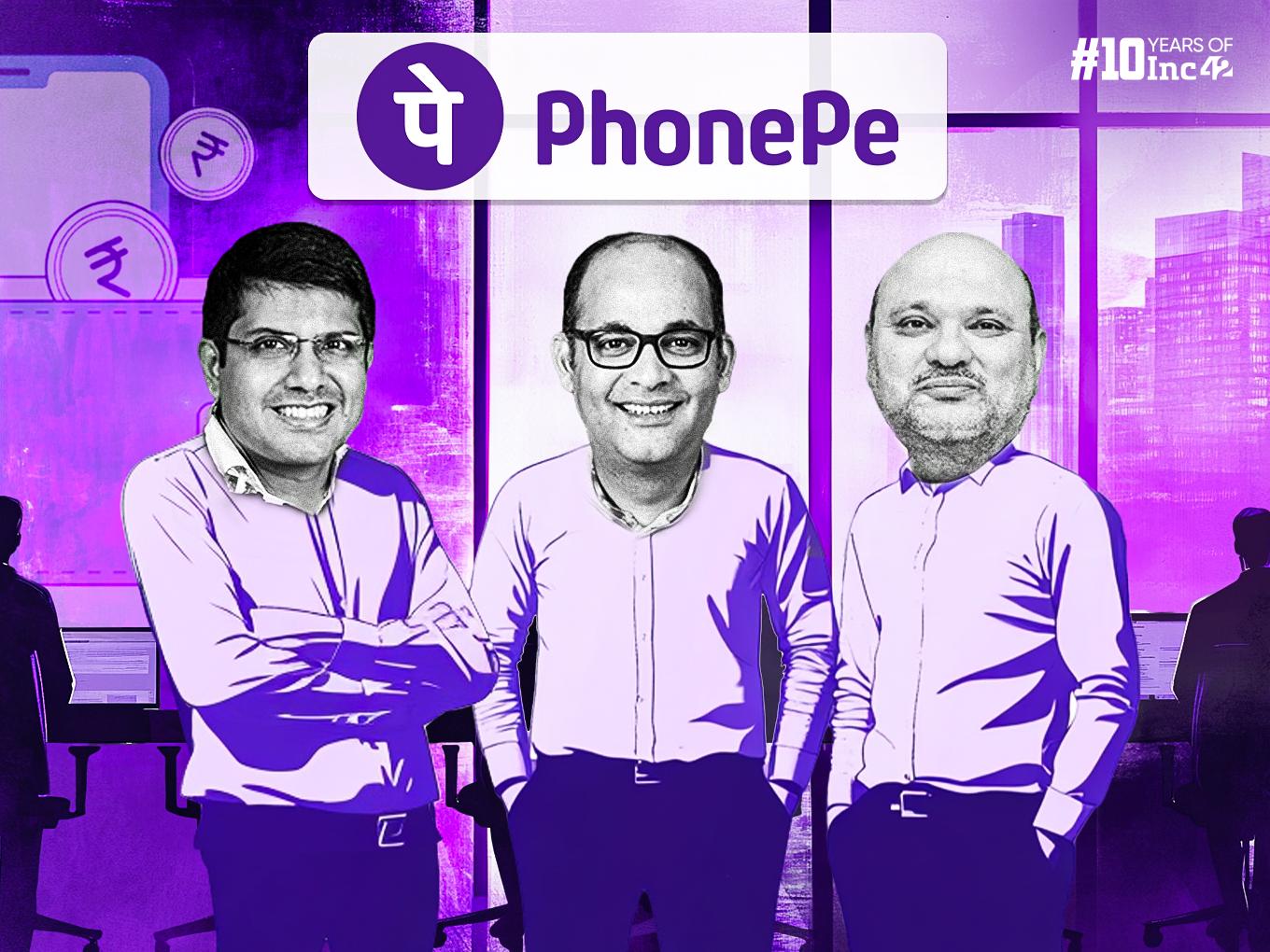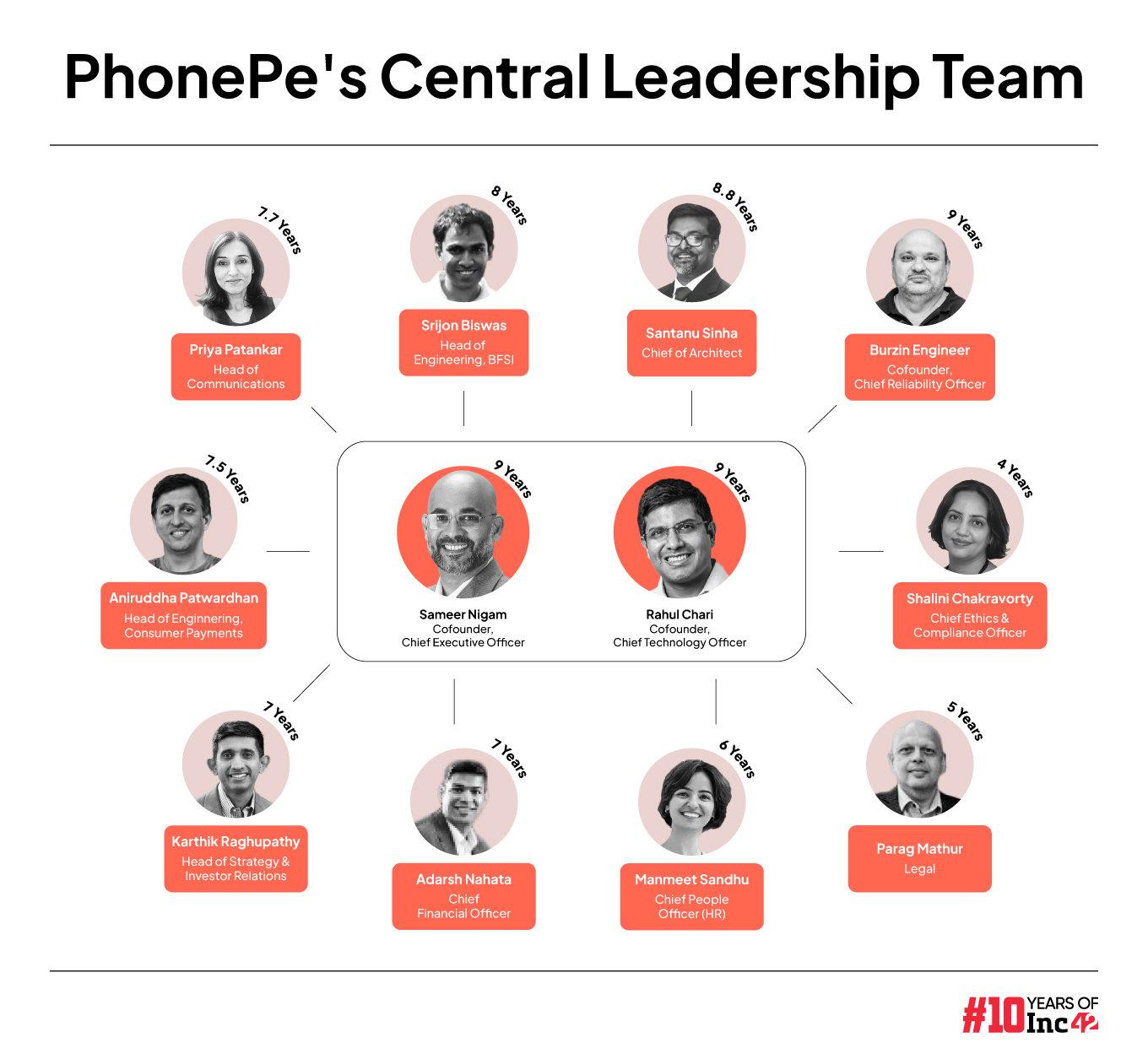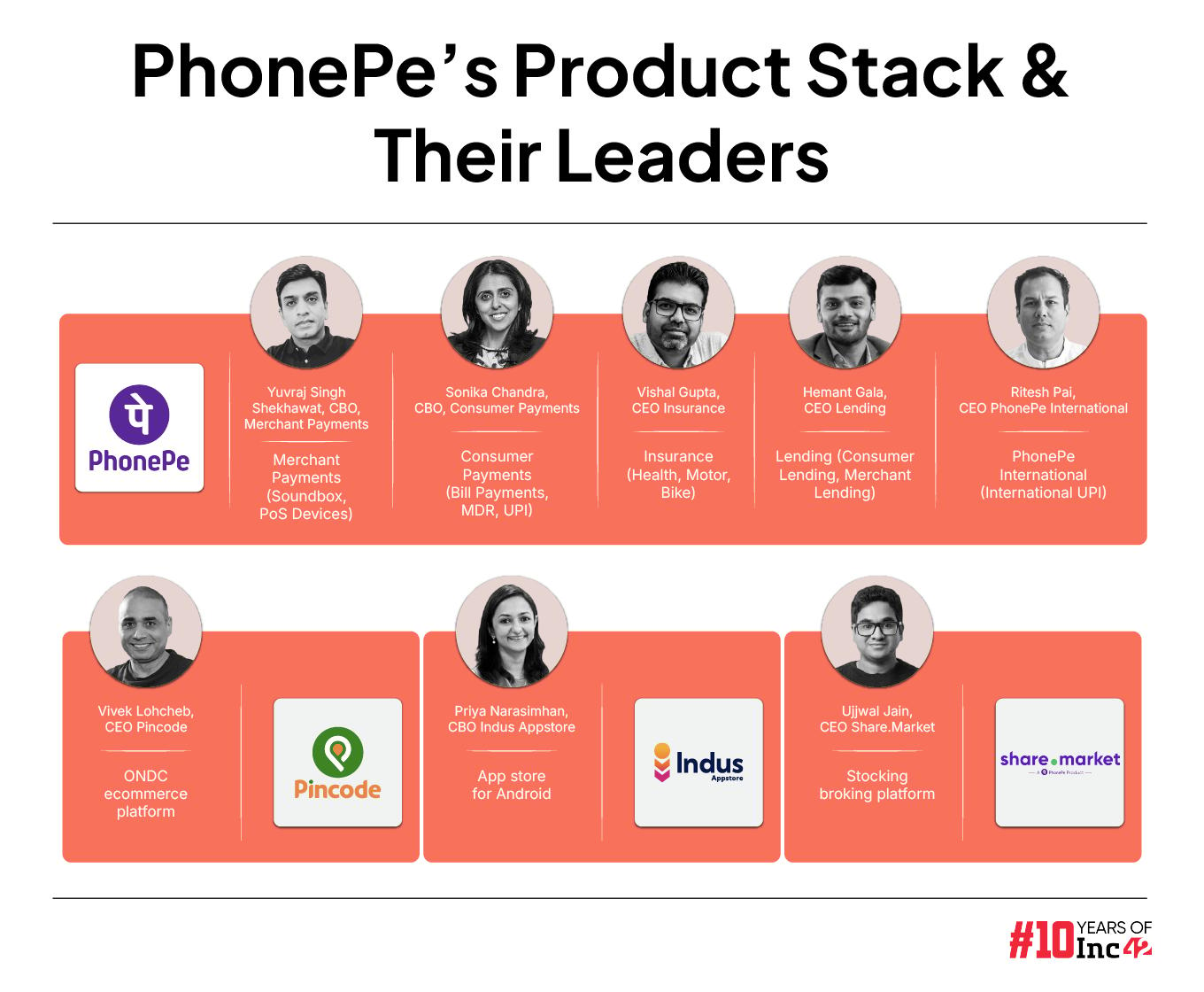The People Taking PhonePe From UPI App To Super App

When was the last time you saw a private company releasing a tell-all annual report? But PhonePe is not an ordinary company any more.
What was once just a UPI app has now morphed into a tech giant, with a presence in key domains outside payments. Which is why the disclosures in the annual report seem out of ordinary.
Especially in the context of startups cherry-picking numbers from their financials and sharing them selectively or without complete clarity. So it was a breath of fresh air to see PhonePe be open, dare we say like a public company.
In fact, cofounder and CEO Sameer Nigam also admitted in the annual report that PhonePe is aligning its corporate governance with that of a publicly listed company.
With more than INR 5,000 Cr in revenue in FY24, PhonePe became the second startup in India to get to this milestone after Paytm.
Over the past eight years, it has built an empire around UPI payments, but in recent years expanded its product portfolio leveraging on its huge existing user base of 500 Mn to cross sell other financial services to diversity and to add to its topline.
- PhonePe Insurance: Launched in early 2020, PhonePe acted as the insurance aggregator to sell insurance from various insurance companies. It received IRDAI licence for distribution in 2021.
- PhonePe Lending: PhonePe initially had forayed into lending with merchant lending in mid of 2023. However, further expanding its horizon, the startup in May this year has also entered into consumer lending to fire up its topline.
- Stock Broking Platform: Last year with the launch of Share.Market, PhonePe threw its hat in the Zerodha and Groww’s space.
- Indus Appstore: The startup challenging the monopoly of Google’s App store, launched indigenous appstore for Android devices.
- Pincode: Leveraging on the growing ONDC network, PhonePe launched its ecommerce platform connecting customers with retail stores.
While addition of newer products will help PhonePe to scale further, even offsetting the impact of a potential 30% UPI market share that is likely to be implemented by the end of the, it is important to know who are at the helm of $12 Bn valued startup.
However, unlike many other companies in the super app space, PhonePe has adopted a startup-within-a-startup approach for its various products. As a result, the company’s leadership structure has a horizontal layer as well as vertical function heads.
As it has added lines of business, the company has added business heads that drive this vertical with centralised functions for administration, finance, HR and other aspects of running a startup.
Here’s how PhonePe is structured:
PhonePe’s Horizontal Core
The Walmart-backed startup has a 12-member centralised horizontal team — including the three cofounders — which oversees the overall function of the entire PhonePe Group, comprising six subsidiaries.
Explaining on how the core leadership team works, a PhonePe’s spokesperson told Inc42, “The horizontal functions (central leadership team) work in a matrixed fashion so that each business has the necessary focus and expertise of these functions while simultaneously also achieving horizontal benefits of governance, cross-business learnings, career growth etc.”

What this means is the core team besides keeping things in check at the group level also ensures that each product vertical heads focuses on product development without worrying about other responsibilities including hiring, finances, legal, and marketing among others.
These added responsibilities emphasise the criticality of horizontal leadership. The institutional knowledge that drives scale at efficiency rests in these key centralised leadership positions.
“The trust and stability at the top have resulted in multiple benefits for PhonePe, as the company has scaled and spawned new businesses,” the annual report highlighted.
The people in the horizontal leadership layer have an average tenure of 6.7 years (excluding the founders, of course), indicating that key executives have stayed together through PhonePe’s acquisition by Flipkart, the subsequent separation and the domicile shift to India from the US.
PhonePe’s Expanding Product Team
Now coming to those leading the individual products highlighted earlier in the story.
It’s no surprise that PhonePe handles the key revenue drivers — consumer payments, merchant payments, billing, and international payments. But the core app is also responsible for the distribution of insurance and digital lending.
By utilising its extensive UPI distribution network the startup has launched and expanded its distribution business around insurance, mutual funds and EDI-based lending for merchants.
This cross-selling and upselling of products has helped the startup to not only add revenue streams, but also diversify, safeguarding it against external changes, ensuring steady and sustainable revenue growth YoY.
A person close to the company claimed that each new vertical is being run as a startup on its own, even though some of them are housed within the PhonePe app.
PhonePe hired different product heads for each of them — such as Vivek Lohcheb for Pincodeor Ritesh Pai who heads the international business.

Besides hiring, the startup has also elevated some key employees from its existing leadership team to take care of new business verticals.
These include Priya Narasimhan, who was earlier heading revenue at the PhonePe Group, but is today the CBO for the Indus Appstore. Similarly, Hemant Gala, was the head of payments and banking financial services, but today leads the digital lending business.
Ujjwal Jain, the founder of WealthBasket – a startup acquired by PhonePe in 2022 – was elevated as the head of Share.Market, one of the key revenue sources for PhonePe in the year ahead.
All these vertical heads directly report to Nigam, who along with CTO Chari forms the bridge between the horizontal and vertical layers. Despite having an exhaustive C-suite team, work has been cut out for each individual, avoiding any overlap with others.
Way Ahead
Now coming back to PhonePe’s transparency with the annual report, where it claimed to be operating like a publicly listed company. It also reveals more about the company’s position.
The emphasis on the individual verticals shows that PhonePe is aware of the predicament it is in. In fact, this predicament is also a reason why the company has not quite pulled the trigger on an IPO.
We are talking about PhonePe’s dependency on UPI, of course, and it’s become increasingly clear that the company needs to diversify and not put all its eggs in that one basket.
Leveraging on its expansive UPI distribution, where it is the market leader, is critical. Which is why there’s a lot of emphasis on hiring leaders for each business vertical, which will need to be scaled up just as much as the UPI payments business.
The horizontal leadership plays a key role in connecting these verticals, since the whole point of a super app is to cross-sell.
But there are key challenges — the first being that each vertical needs to attract and acquire customers independently, rather than piggybacking on PhonePe itself. For instance, Share.Market can use PhonePe as a funnel, but it cannot do so while ignoring acquisition of new users. The same applies for Pincode.
Moreover, the business of running an app store is not without its operational challenges, particularly with regards to security, user safety, developer engagement, which involve a high degree of difficulty.
PhonePe must ensure seamless vertical integration to deliver a true super app experience – something that even the Tata Group through its Tata Neu has failed to deliver, despite having deep pockets.
We can also see the logic of having multiple different products for each of these verticals, unlike Paytm, for example. There’s still some debate that the super app model is not perfectly suited for the public markets.
Paytm’s Vijay Shekhar Sharma has spoken about this challenge in the past, so PhonePe is playing it smartly by positioning itself as a company with multiple products, rather than a super app in the traditional sense.
The jury is still out on which approach is right. PhonePe would be hoping that its super app bet would fly better with retail investors than Paytm’s when the IPO does come around.
[Edited By Nikhil Subramaniam]
The post The People Taking PhonePe From UPI App To Super App appeared first on Inc42 Media.
No comments